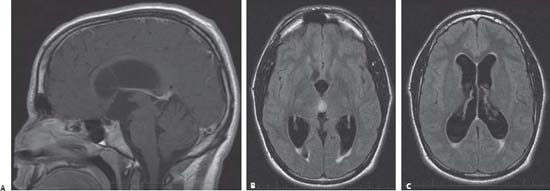Case 53 Aqueductal Stenosis Fig. 53.1 (A) midsagittal T1-weighted magnetic resonance image and (B,C) axial fluid-attenuated inversion-recovery image of the brain.

 Clinical Presentation
Clinical Presentation
 Questions
Questions
 Answers
Answers
< div class='tao-gold-member'>
53 Aqueductal Stenosis
Only gold members can continue reading. Log In or Register to continue

Full access? Get Clinical Tree


